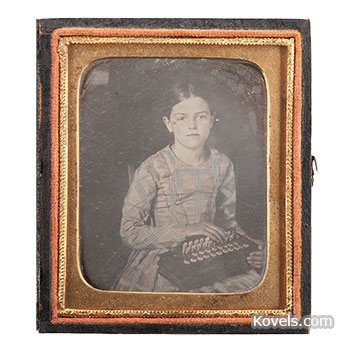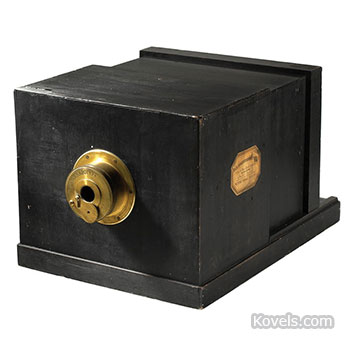Do you have some very old pictures of ancestors, perhaps some that are daguerreotypes? Be careful buying from unfamiliar sources. Fake examples of some very expensive 19th century daguerreotypes have been offered for sale online so often recently that they have aroused suspicion. Experts from the Daguerreian Society (Daguerre.org) investigated and learned they were probably coming from dealers in Germany or Poland. The fakes picture some famous men of interest to collectors of photography like Louis Daguerre (1787-1851) himself. (Only two daguerreotypes of Daguerre are known.) The fakes are on authentic 1840’s or 1850’s plates. There are what seem to be recently added signatures, credits and labels, even added red wax seals or locks of hair. Some are embossed on the plate or passe-partout (the glass and cardboard taped “frame.”) Some have the handwritten label “Académie des Sciences” on the back. If you see one of these daguerreotypes offered for sale, copy the advertisement and send it to info@daguerre.org for the database on fake items.
Thanks to the Daguerreian Society for this information. This very active group publishes new information and history all the time. (Although I only have a few unusual daguerreotypes, I belong to the society to learn more.)
Digging Deeper
The first successful photographs were daguerreotypes introduced in 1839 by Louis Daguerre, the inventor. They were replaced by other, newer types of photography by 1860. A daguerreotype is a picture on a thin silvered-copper plate with a mirror-like surface. It was sensitized to light by iodine and bromine in a light-proof box. Then after being exposed to the subject being photographed it was taken to a dark room and “fixed” (developed) with a wash of thiosulphate of soda, then distilled water, dried and covered with a piece of glass. The picture and glass were mounted in a frame. It was expensive and only the rich and famous could afford the pictures.
TIP: Collectors are most interested in pictures by famous photographers, of famous people, or of subjects with props that help identify a particular job or event. Elaborate clothing or a morbid picture of someone in a coffin is also of extra interest.





Leave a Reply
You must be logged in to post a comment.